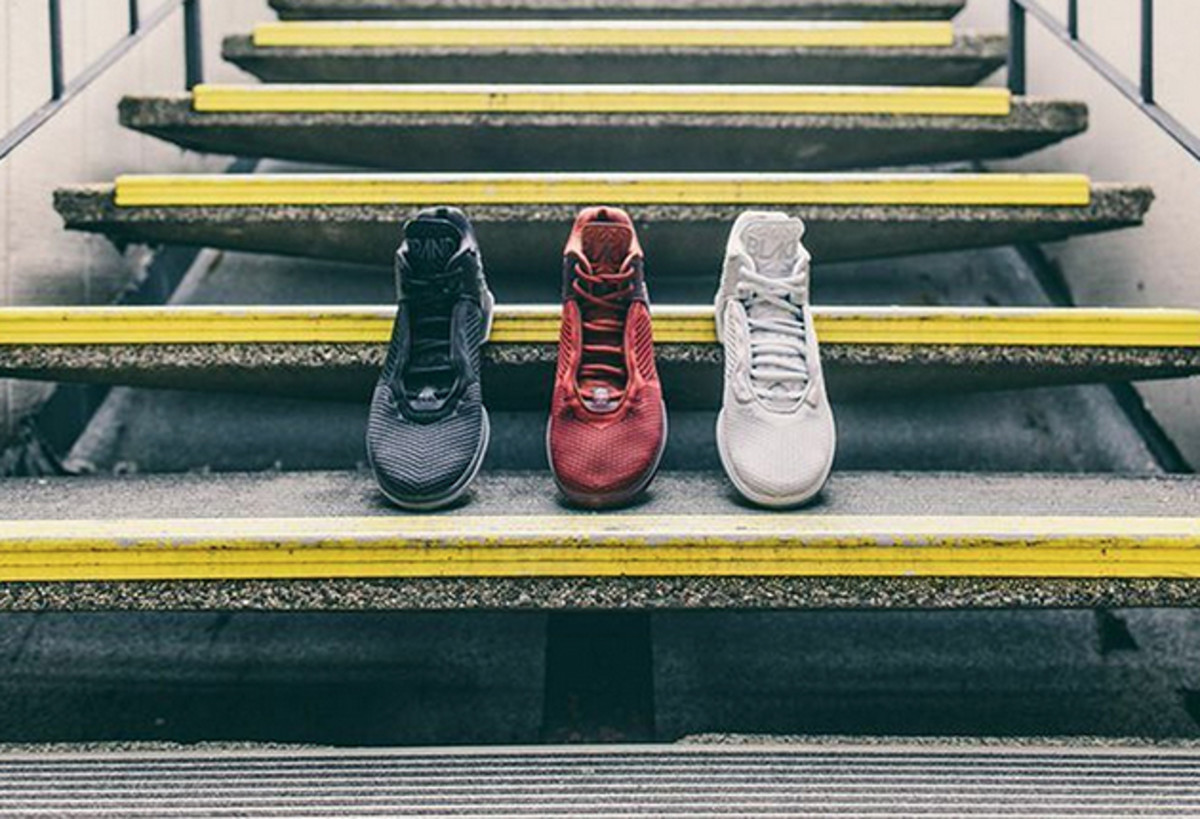Brandblack merges fashion and performance on the hardwood

Two years ago, when David Raysse started Brandblack, merging sport and fashion wasn’t a trend. And on the hardwood? Shoes were classified as performance or lifestyle, rarely crossing over. But crossing over signifies a major tenant of the California-born sneaker company, a “new type of brand” worn by Clipper Jamal Crawford—and his aptly named J Crossover II—and players searching for a fresh sneaker perspective.
“I’ve been trying to mix the fashion and sport worlds at every company I’ve been at, whether Fila or Adidas,” Raysse tells SI.com. “I’m trying to do things differently.”
Raysse found different in Brandblack.
With decades of experience under his belt, including designing shoes for Grant Hill and Jerry Stackhouse while at Fila, the veteran designer knew his passion project needed to appeal to those looking for an alternative to compete in the Nike-dominated world of basketball sneakers.
- MORE NBA: Westbrook lifestyle shoe | Jordan's over years | Nike style
“You don't go in and fight the champ’s fight,” he says about taking on sneaker heavyweights. “You go in and bloody the nose and piss him off. I think everyone who loves sneakers grew up loving Nike. You have to find your own voice and go your own way. There is a movement of people excited about something new. Our customer is the purest basketball guy who wants the best shoe on the market and the fashion guy looking for this new thing.”
Going in-depth with Brad Hall: The sneaker reviewer like no other
The performance and aesthetic, then, go hand-in-hand for Brandblack. Signing Crawford helped promote that relationship, providing on-court credibility and an avenue for Raysse to hone his product.
Raysse puts a premium on materials. When designing the J Crossover II, released in April, he “felt like a junior designer,” having to learn a new way to design using knits on the forefoot with thermoplastics woven in to engineer flexibility and support. “I had to take courses on this,” he says. “It was a radical new way of building product.”
Working with Crawford, Raysse designed the feel of a broken in shoe to keep the L.A. guard happy. “He’s extremely sensitive to certain things,” Raysse says. “Other guys just play in (shoes) and are more or less happy. Jamal is very particular on anything from sock liners to collar irritation. It led us to try new things.”
Along with the thermoplastic-infused knit, the J Crossover II has a proprietary foam that has 20% more rebound and is 10% lighter than EVA foam. To provide stability in the cushioned shoe, the brand’s “force vector technology” provides a foot-stabilizing plate.

Being different, though, requires fashion-forward designs that don’t look hardwood ready (but are).
The June release of Brandblack’s Force Vector signifies this with an all-leather offering. “If you look at that shoe, it doesn’t look at all like a performance shoe,” he says. “It is built to look good on and off the court. There is no reason the Force Vector can’t function.”
Raysse decries the overuse in today’s mainstream market of shiny plastics and other materials he says work as marketing ploys, saying those shoes “put so much crap on product to make it look better than it actually is,” all while cutting costs and appeasing bean counters. Instead, with the Force Vector he selected premium leather, full-grain Napa leather—that’s the good stuff. Leather molds. It breathes. And the Force Vector remains lightweight at 11 ounces.
With a born-on goal of merging fashion and performance, Raysse chose the company name to play into the easily recognizable power of black, the exclusive feel of black—black editions, for example—and the idea of representing a black sheep in the sneaker world. With the name settled, Brandblack needed a logo.
- MORE NBA: Nike unveils KD8 | Teague sneaker closet | Crazylight boost
“I can tell you every designer who has worked for another brand is envious of the (Nike) Swoosh,” Raysse says. “As a mark it is not spatially specific and it conveys speed. Positioned in any way, it works.” With Brandblack located not even a mile from major aerospace powers such as Boeing and Lockheed Martin in its El Segundo, Calif., home, the design team fell in love with the SR 71 Blackbird plane’s side elevation, the inspiration for the brand’s mark.
Since the brand’s birth, the popularity of what Brandblack represents has grown, with the J Crossover II selling out on Finish Line’s website in 15 minutes. Other boutique releases have shown similar results.
That requires Brandblack to remain forward moving, away from the mainstream. “On one hand, the knowledge I acquired over the years, I can use that. But it can become a crutch and limit my ability to see new things,” Raysse says. “Philosophically I haven’t changed, listening to athletes to guide solutions. Those solutions have changed.”
So expect something entirely new with the pre-holiday 2015 release of the J Crossover III, something “aesthetically not in my comfort zone” and a push toward higher fashion and fan interaction, even while improving the foam after two years of research and development and extending the force plate. Raysse has to push. He has to remain different. He has to merge sport performance and fashion. He has to remain Brandblack.
Tim Newcomb covers stadiums, design and gear for Sports Illustrated. Follow him on Twitter at @tdnewcomb.
